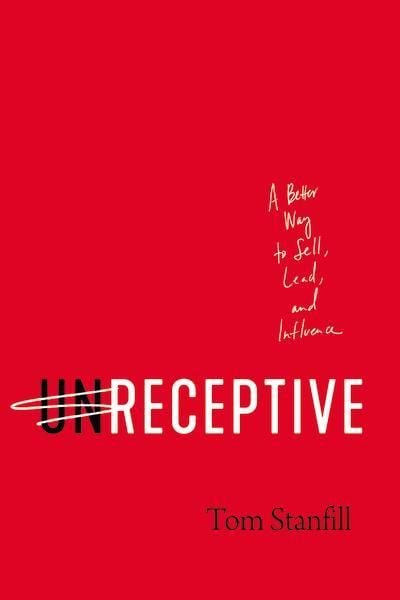We now consume the equivalent of 174 newspapers a day, more than four times the average in the late ’80s, and receive anywhere from three thousand to ten thousand messages a day. Think, then, for a moment about the world you are entering when you send an email. How many other competitive messages will be sent that day, hour, minute? Where will the recipients receive that email: on their mobile device or computer? Will it be one of the 150 left unread as the decision maker emerges from an all-day meeting, or will it be banished to obscurity as it dies a slow death in the junk folder? To elicit a response, your Other-Centered Position needs to be wrapped in a nice package.
Emailing Sales Prospects? Answer These Three Questions.
- Who are you?
- Can you solve my problem?
- What’s required to move forward?
The Email Body
To unpack the body of the email, let’s work from an example of an email sent by a rep selling voice and data services to an engineering firm with remote employees. (I know, exciting.)
Subject: Referred by Susan Johnson
Jane,
I’m reaching out about your twenty-six engineers spread through- out the Southeast. I am currently working with Abbott Engineering Services and Susan suspected you may have the same challenges other engineering firms face while trying to support their remote consultants:
- Wasting time accessing large files on a remote network
- While at the client site, missing calls from your most strategic customers
- Hassle dealing with multiple numbers, poor voice quality, and loss of productivity in being disconnected from the main office staff in Atlanta
We just expanded our network and may be able to offer our voice and data services comparable (or possibly less) to what you are paying now. This could ensure your remote employees have the same support (and voice and data quality) as if they were located at your headquarters in Atlanta.
If this is a priority, let’s schedule a brief, fifteen-minute conversation to determine if it makes sense to have one of our engineers offer a free assessment of your current voice and data service.
In the meantime, if you would like to learn more, I’ve included a case study that highlights the top five problems we solve for virtual, engineering companies (most surprising is the total hours of down time) and how they affect productivity and the bottom line.
Let’s deconstruct this email and explore the four sections of an effective email: the connection, the Other-Centered Position, the offer and the proof. Each are designed to answer the customer’s three questions that determine their willingness to engage: Who are you? Can you solve my problem? What’s required to move forward?
4 Sections of an Effective Sales Prospect Email
- The connection
- The Other-Centered Position (OCP)
- The offer
- The proof
The Connection: Who Are You?
Think about the number one driver behind why you accept an invitation: who’s inviting you. We can’t overlook that truth when prospecting. You probably don’t know the person you are trying to engage. You probably don’t have a door-opening name or title. But the fact remains, the more the prospect sees a connection, the higher the probability the email will be read. Therefore, we need to start by providing context for the relationship.
Statistically, emails from people we know are read more than emails from strangers. An article published by Fast Company details the findings of one thousand emails sent to the most difficult audience: executives. What drove the highest response rate? Familiarity. The sender knew something about the recipient, or they leveraged an existing relationship. Another important revelation was that the less generic the message, the higher the response rate. This is why the first sentence of this email works so well.
If you know that the company has “twenty-six engineers spread throughout the Southeast,” there must be some connection to Jane. It’s the perfect way to make a connection — demonstrate familiarity by focusing on them. Remember, the more specific the details, the higher the click rate. Additionally, referencing Susan and Abbott Engineering (offices in the same office complex) moves the seller from stranger to a “friend of a friend” status. By adding just a few words, you’ve created an instant connection and interest in knowing more.
If you hadn’t talked to Susan and you weren’t willing to spend the time calling an insider to capture information, all you would learn from LinkedIn, Google or their webpage is they have engineers located in the Southeast. Look for something specific you can refer to (for example, hiring in Greenville, layoff, acquiring a new customer, and so on). If you show them a “picture” of themselves, they will always look at it. Always.
The Other-Centered Position: CAN YOU SOLVE MY PROBLEM?
Once the connection is made, it’s time to deliver your Other-Centered Position. Draw them to your solution by focusing on their whiteboard or point of view, not your solution, a barrier keeping the heroes of the story from getting what they want. The customers’ point of view will contain three categories of information:
- What they want, their desired destination
- Their perspective on how to get what they want
- Challenges they face in implementing the plan
Your OCP can start with any of the three, but the one that usually has the most impact is number three. This is where they feel the pain, where confusion exists, and where they have the greatest need. Remember to start with the fire before offering the smoke alarm.
This is where we demonstrate that we know what they’re struggling with.
-
Wasting time accessing large files on a remote network
-
While at the client site, missing calls from your most strategic customers
-
Hassle dealing with multiple numbers, poor voice quality, and loss of productivity in being disconnected from the main office staff in Atlanta
The purpose for reaching out is all about Jane, not the seller’s solution. It describes a perceived need and, because it doesn’t lead with a typical sales or marketing pitch, it’s unpredictable. Why bullets? With the volume of information being processed on a daily basis, people scan before they read. To draw their attention to what you want them to see, visually serve up the key sound bites in short sentences and bullets. You may spend an hour perfectly crafting your email, but they will delete it in one second if you bury the good stuff.
The Offer: What’s Required to Move Forward?
Once you’ve successfully answered the first two questions, it’s time to answer the next question: “What’s required to move forward?” The answer to this question is always: as little as possible for the customer, while providing the most value.

If this is a priority, let’s schedule a brief, fifteen-minute conversation to determine if it makes sense to have one of our engineers offer a free assessment of your current voice and data service.
The seller drops the rope by simply using the word “If.” All assumptions are arrogant, and at this stage, assuming you know what they should do comes off as arrogant. It’s not the message you want to send to a stranger who ultimately needs to trust you enough to give you money.
By communicating you are unaware of their list of priorities and focused on determining what’s best for them, it makes you and your email stand out. It’s a step toward removing the tension that always exists in the seller-buyer relationship.
Additionally, the offer to only meet for fifteen minutes and introducing the possibility of a free assessment by an engineer reduces the risk to engage and delivers an immediate, cost-free benefit for the buyer.
Think baby steps. Again, effective offers remove as many barriers as possible while simultaneously providing the most value to customers. How the email is written will determine if they perceive the offer has value.
The Proof
Most prospects will require more information before accepting your offer. End the email by offering some additional proof to validate your solution. Attach or provide a link that will provide more compelling information on how you have solved this problem for others. Just be sure the information is helpful to addressing the barriers described in the email and demonstrates how you can help them reach their desired destination, as opposed to an infomercial on your company or solution.
Articles, white papers, and case studies are common, but don’t limit your proof to the typical deliverables. Try to come up with some creative alternatives: use Soapbox to create a custom video, share a YouTube video, send them a book. Remember, unpredictability determines impact. The more you deviate from the norm, the more you stand out.
Our marketing team recently tested this approach by sending a generic email to three hundred recipients. Other than name, there was no attempt to personalize the email. The open rate was 213 percent greater than the industry average, and the click-through rate outpaced the norm by 426 percent. Imagine your success rate if you take a few extra minutes to customize the email.
* * *
Taken from unReceptive by Tom Stanfill. Copyright © 2021 by Tom Stanfill. Used by permission of HarperCollins Leadership. www.harpercollinsleadership.com.





